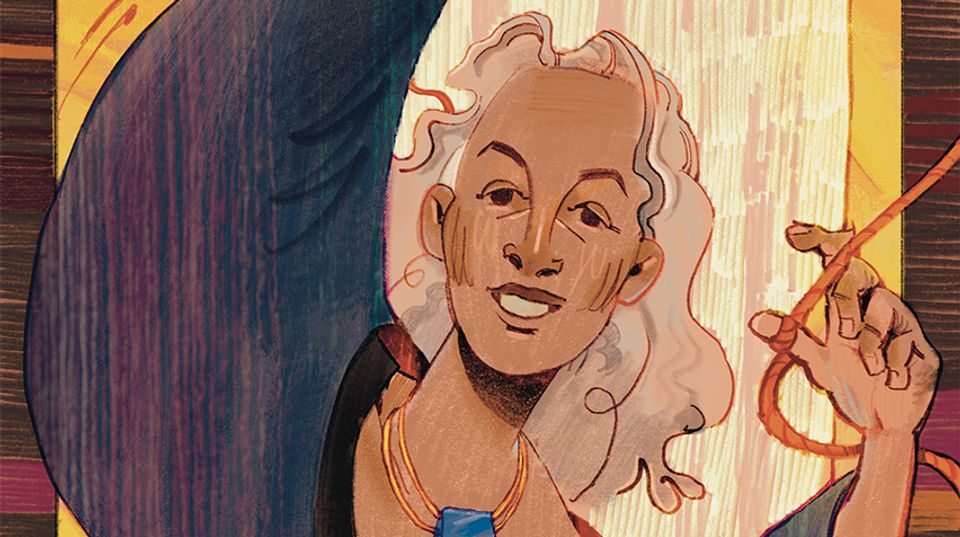
Cory Arcangel, installation view of Super Mario Movie, 2005
Not having grown up a joystick jockey, Cory Arcangel's lecture and work, presented at the American Art Museum on Thursday March 5, helped me ‘get' video games for the first time. You can see clips from his presentation on American Art's YouTube Channel.
Perhaps best known for his riffs on Nintendo, Arcangel hacks and rewrites popular media to tell a new story. In Super Mario Clouds from 2002, the entire game has been erased, leaving only the clouds. Arcangel has posted the source code on his Web site and got feedback from a fan: there was a mistake in a pixel in one of the passing clouds. Arcangel obligingly corrected the code and now makes two versions available for download. This made me wonder: what is a ‘digital' artist's Web site? And do artists in other media rework their pieces in response to their audiences?
Collaboration and self-reflection is typical of Arcangel's process. He teamed up with the Paper Rad Art Collective in 2005 to make the Super Mario Movie, which opens with Mario-era computer text titles: "AS A VIDEO GAME GROWS OLD ITS CONTENT AND INTERNAL LOGIC DETERIORATE; FOR A CHARACTER CAUGHT IN THIS BREAKDOWN PROBLEMS AFFECT EVERY AREA OF LIFE".
Perched on a question mark, Mario looks left and right, asking: "STANDING HERE OR JUMPING WHERE HOW DID I GET HERE".
The data decay of having been "IN SOMEONE'S CLOSET FOR TWENTY YEARS" eats away at Mario's short video life. The "MASTER TIME CLOCK" becomes corrupted, "DANCING DANCING..." code eventually overwrites the digital images and the movie closes with the ‘white screen' that signals Nintendo crashes.
Deeply suspicious of technology, Arcangel explained, "The history of technology is of course the history of war so I thought I'd use it against itself." He is wary of new online spaces like Second Life, saying, "They're all fads so I always take it slow; it takes me years to understand them," and to decide how to incorporate them into his work.
Nonetheless Arcangel is a coding expert. His work, On C, published in Frieze magazine, looks more like a chapter from a physics book; it is "a short PDf that explains why Jpegs look the way they do" – including the algorithms. In creating his split-screen video installation, A couple thousand short films about Glenn Gould, Arcangel sampled YouTube videos to excerpt every single note of Johann Sebastian Bach's 1741 composition, The Goldberg Variations (BWV 988). He had to write video authoring software to stitch them together because no existing product could work as fast as he needed it to: "a pain in the ass," commented Arcangel. This is an artist who knows his materials inside and out, and as a result, makes it all look incredibly effortless.
And playful. Total A$shole Compression from 2004 asks ‘Why make files smaller, when you can make them bigger – much bigger?' – and offers a compression tool guaranteed to overload any anyone's bandwidth and computing power. Dooogle.com from the same year reworks the popular search engine to generate results only on Doogie Howser, the popular TV comedy that ran from 1989–1993.
"Ideas pour over me like a waterfall, hundreds a day, every day… it's oppressive," says Arcangel. You can read some of them in his 2009 Continuous Partial Awareness, downloadable from his Web site. They are full of jokes and puns and references to media from a by-gone era. In his work, Arcangel offers us the chance to revisit old games and corrupted memories, using them to write new poetry with a smile.
If you missed Cory Arcangel, you can see him on the cover of this month's ArtForum, and you have two more chances to dip into contemporary media art practice at American Art: Leslie Thornton speaks this Thursday on how Orientalism relates to her work, and Raphael Ortiz presents an overview of his work in performance, sculpture, film and video art on March 26. Both artists join us at 7pm in the McEvoy Auditorium.


















